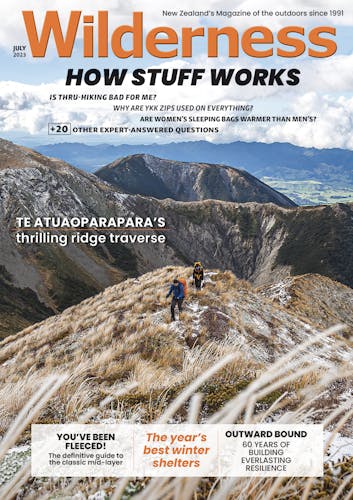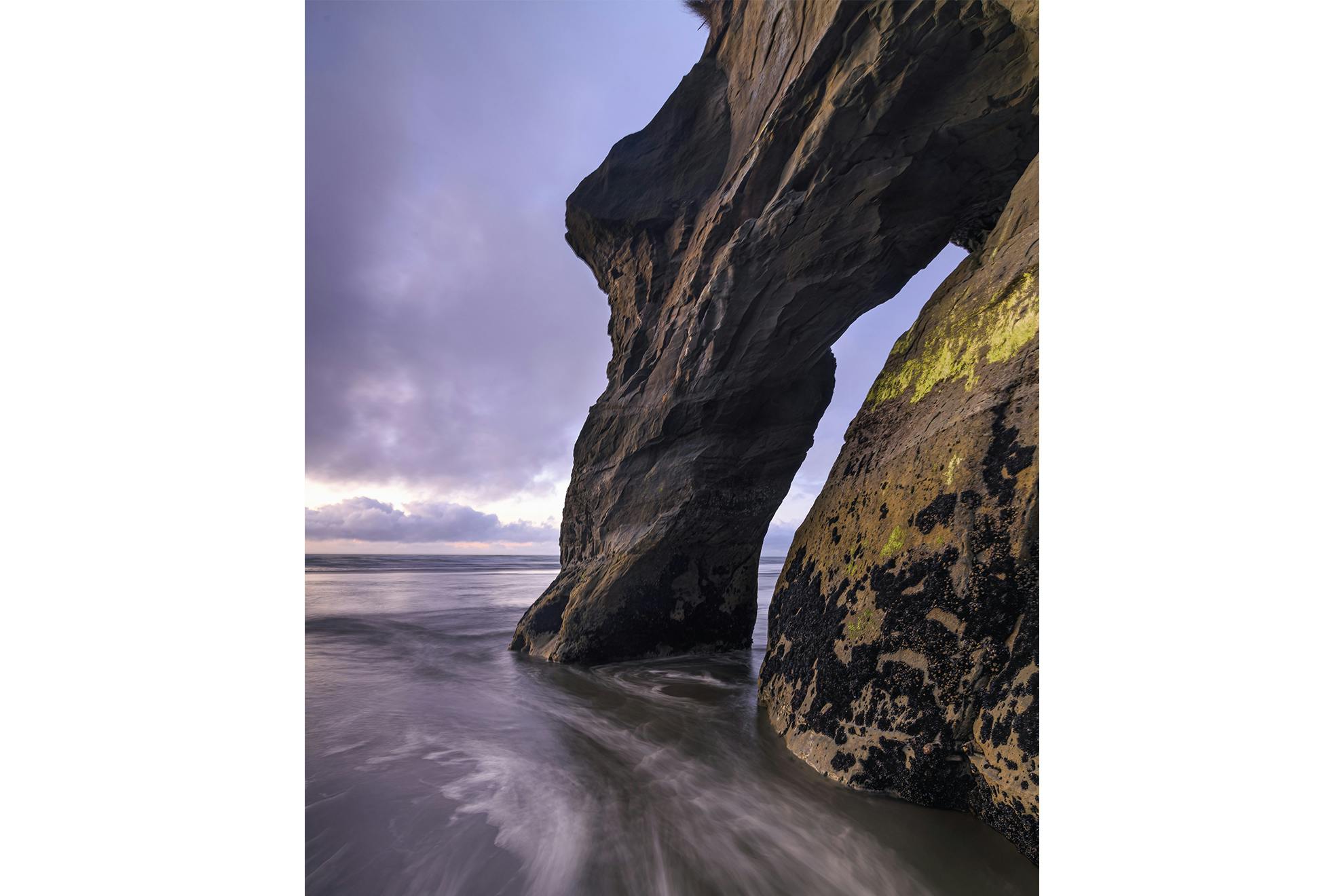These six walks lead to impressive natural arches.
What nature produces, humans often try to replicate. The Romans mimicked natural arches when designing their bridges, as these Latin engineers recognised the inherent strength of the form. There is not only strength in an arch but a pleasing aesthetic, too.
While New Zealand may not have the abundance of natural arches found in places like Utah’s Arches National Park, we do have a handful of impressive ones. Some have been shaped from limestone by the corrosive action of water, others have been beaten into shape by the relentless attention of that master carver, the ocean.
Here are six walks that all feature an arch, ranging from the elegant to the monumental.
1 Tongapōrutu, Taranaki
The northern Taranaki coastline is. a place of impressive seascapes: where blunt cliffs meet the pounding breakers of the Tasman Sea; where rock stacks rise from the low-tide sands, and where arches have been created by the action of innumerable tides. Access is from the tiny hamlet of Tongapōrutu, just off SH3. A 30-minute walk along the true left of Tongapōrutu River leads to the sea.
Don’t attempt this walk in anything other than the two to three hours preceding low tide, as the sea comes in dangerously rapidly after the tide turns.
2 Ōpārara Valley, Kahurangi National Park
Some of the most impressive limestone arches in the country are in the Ōpārara Valley.
Two can be visited on short walks beginning from the end of McCallums Mill Road, which is about an hour’s drive along a winding, narrow road from Karamea. The smaller, but more shapely, is known as Moria Gate, a natural limestone bridge spanning the Ōpārara River. It’s reached on a well-graded circuit, which also passes Mirror Tarn. Allow two hours for the circuit. The larger arch, known as the Ōpārara Arch, is also a collapsed cave system, and is accessible on a separate track. Allow 30 minutes each way.
3 Mangapohue Natural Bridge Scenic Reserve, King Country
Limestone dominates much of the King Country, famously at the Waitomo Caves. But there are other subtler features too, including the arch at this small scenic reserve, which is accessible on Te Anga Road, about an hour’s drive from Te Kuiti. A 20-minute track leads through lush native forest to the natural arch.
4 Doughboy Bay, Rakiura National Park
Rakiura’s four-to-five-day Southern Circuit is a shorter tramp than its more northern counterpart, but is no less spectacular. Perhaps the most interesting coastal location is Doughboy Bay, where an eight-bunk hut offers good accommodation. Around the far side of the bay (watch out for quicksand!) is a small islet, and sea arch, which can be walked through.
5 Taupō Point, Abel Tasman National Park
While granite dominates most of Abel Tasman National Park, at Taupō Point, a limestone outcrop occurs at this unusual headland. There was a Māori pā on the headland here, which offered excellent natural defences as well as a superb vantage point. Access is from Wainui Bay, where a track diverts off the Abel Tasman Coast Track and follows the picturesque shoreline, passing a sea arch en route, until reaching Taupō Point. Access is dependent on low tide, so plan your trip accordingly. Allow 90 minutes each way.
6 Archway Islands, Golden Bay
Wharariki Beach is a 25-minute walk over farmland and through sand dunes. It’s a coastal location of outstanding beauty and is always worth the effort to get there, no matter the weather. Lying just offshore are several islands, only just separated from the mainland at the lowest tides. The largest features an impressive arch that is only apparent as you walk west along the beach and look back at it from an oblique angle. It’s quite a sight. Allow a minimum of two hours to fully enjoy the place.








